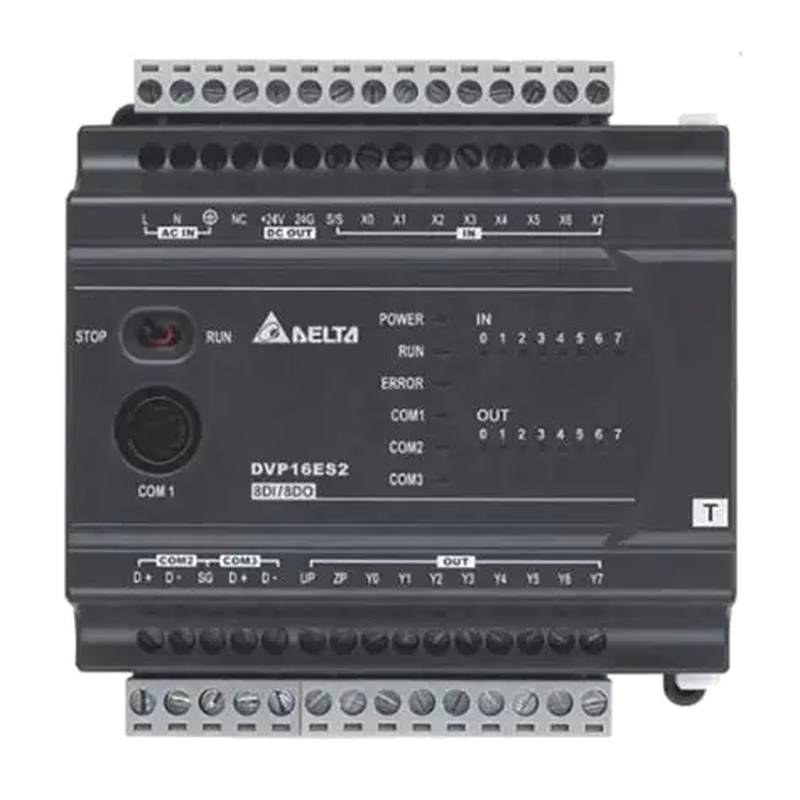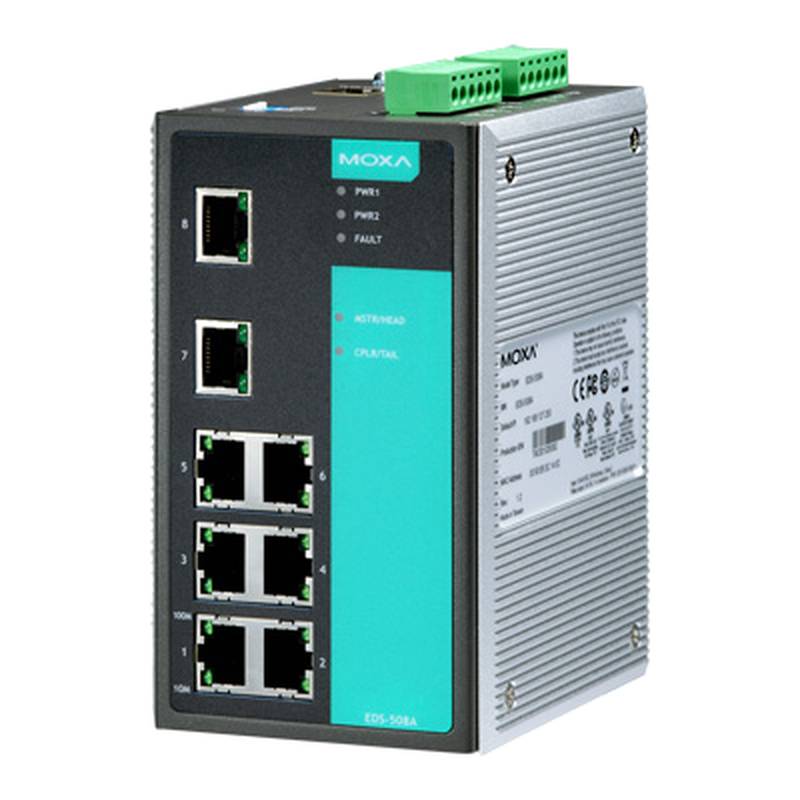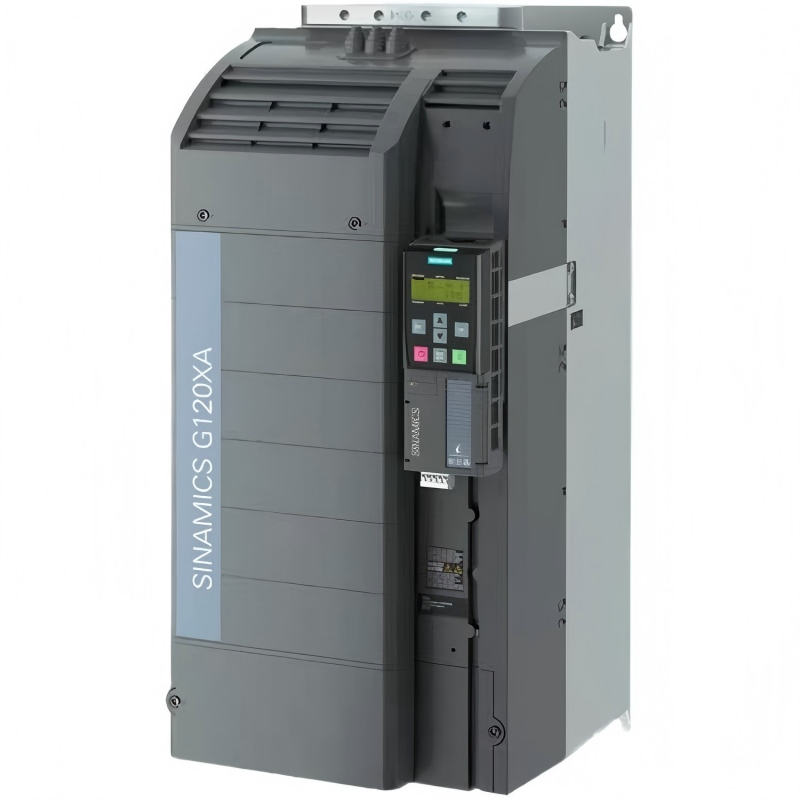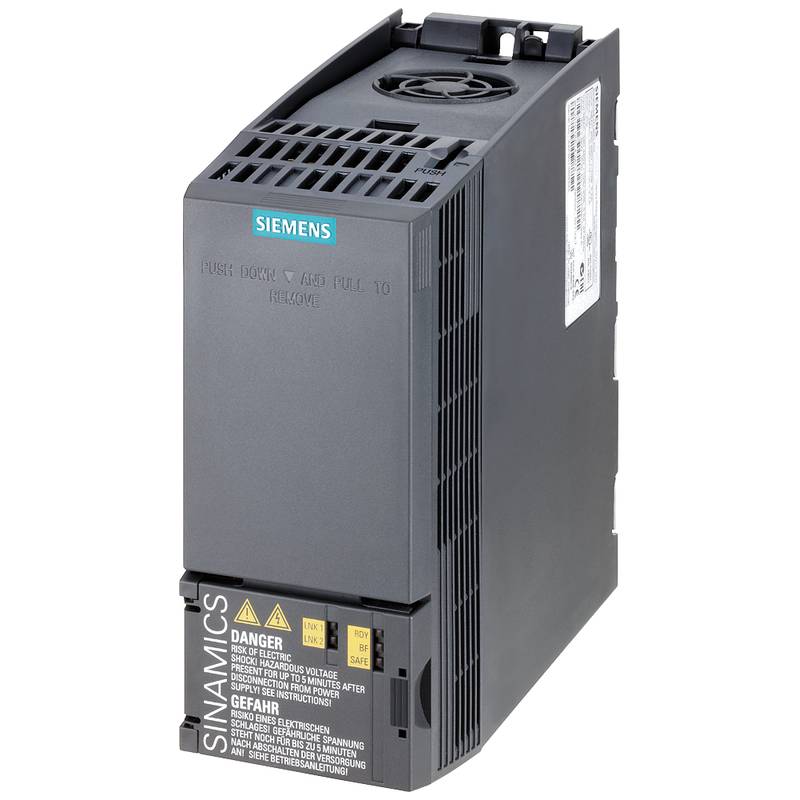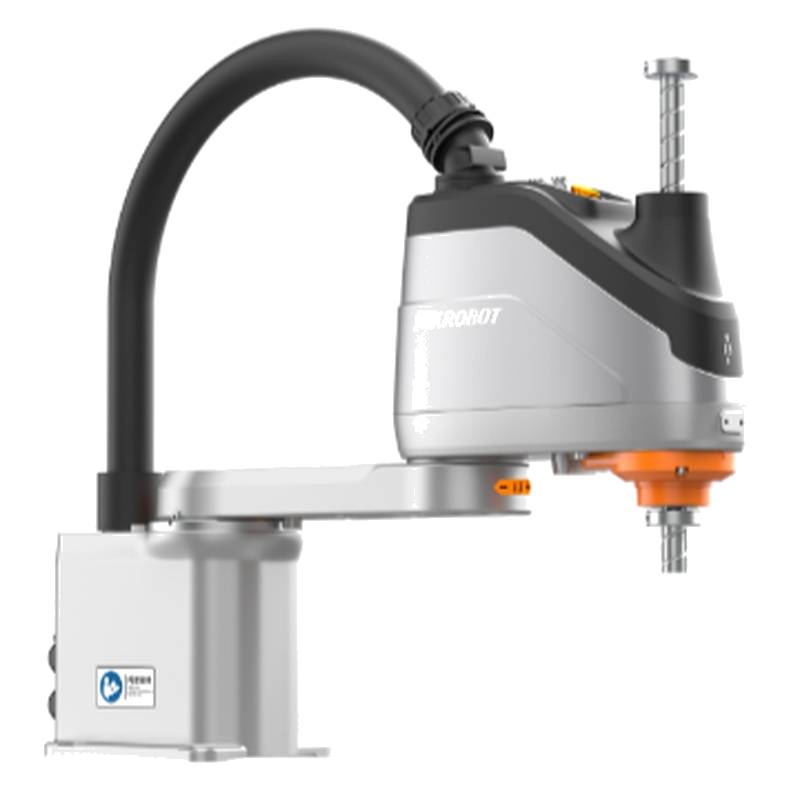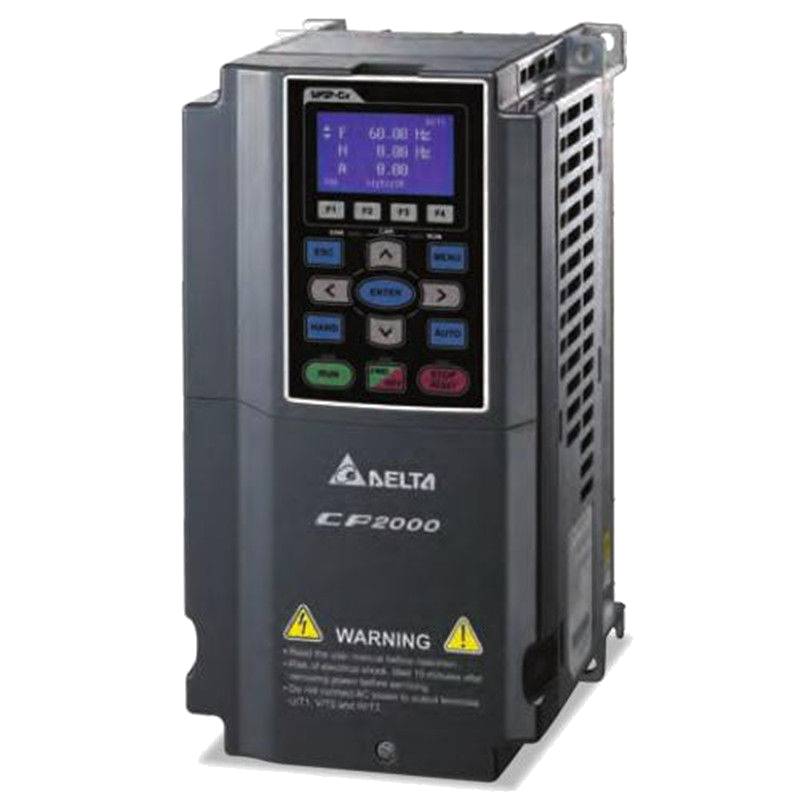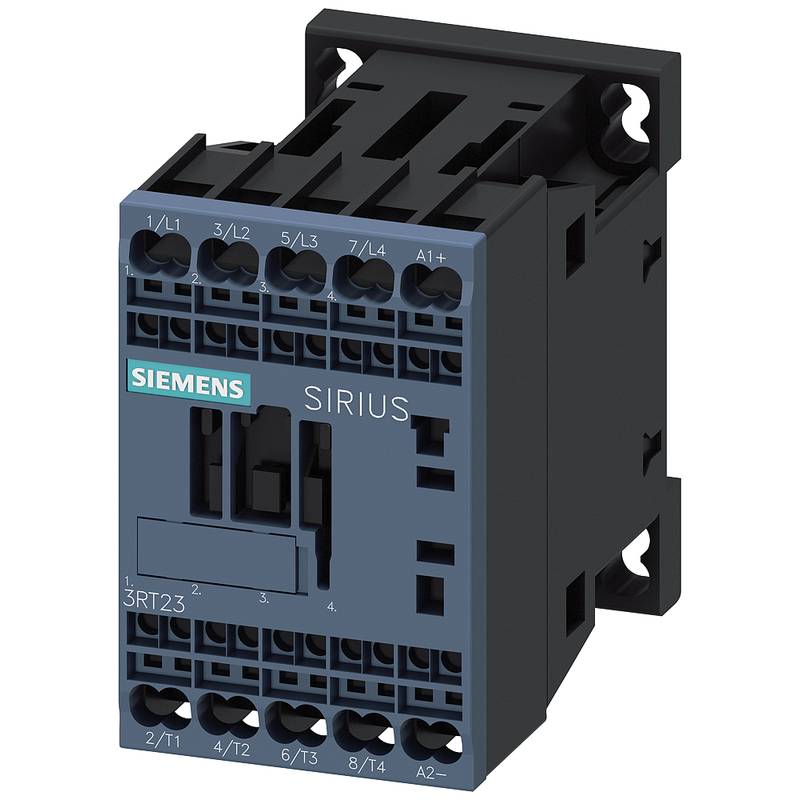
The Siemens 5SU9356-2CN32 is a high-performance Industrial Grade RCBO, engineered for robust protection in demanding electrical environments. This 32A, 30mA, 1-pole + neutral device offers superior overcurrent and earth leakage protection, ensuring operational continuity and personnel safety. Its key advantages lie in its compact design, enhanced tripping sensitivity, and Siemens' renowned reliability, making it a premier choice for industrial applications where failure is not an option.
Siemens 5SU9356-2CN32 Product Specifications
| Parameter | Specification |
| :--------------------- | :-------------------------------- |
| Product Type | RCBO (Residual Current Circuit Breaker with Overcurrent Protection) |
| Manufacturer | Siemens |
| Model Number | 5SU9356-2CN32 |
| Rated Current (In) | 32 A |
| Rated Residual Operating Current (IΔn) | 30 mA |
| Number of Poles | 1P+N (1 Pole + Neutral) |
| Tripping Characteristic | Type D |
| Breaking Capacity (Icn) | 6 kA |
| Voltage Rating (Un) | 230/400 V AC |
| Frequency | 50/60 Hz |
| Terminal Type | Screw Terminals |
| Mounting | DIN Rail |
| Ingress Protection | IP20 |
| Ambient Temperature | -25 °C to +45 °C |
Core Features & Market Positioning
The Siemens 5SU9356-2CN32 stands out in the competitive industrial protection market due to its Type D tripping characteristic. This characteristic provides enhanced immunity to nuisance tripping caused by high inrush currents from inductive loads, a common challenge in industrial settings with motors and transformers. Coupled with its 30mA residual current sensitivity, it offers a dual layer of protection against both overloads, short circuits, and dangerous earth faults, critical for preventing equipment damage and ensuring workplace safety. Siemens' legacy of engineering excellence and rigorous testing further solidifies its position as a trusted brand for critical infrastructure protection.
Key Application Scenarios
This RCBO is ideally suited for protecting individual circuits in industrial machinery, control panels, and distribution boards where reliable and sensitive protection is paramount. Its 32A rating and Type D characteristic make it particularly effective for circuits supplying motors, pumps, compressors, and other inductive equipment that experience significant start-up currents. It is also an essential component in applications requiring high levels of safety, such as food and beverage processing plants, manufacturing facilities, and automated production lines, safeguarding against electrical fires and electric shock.
Practical System Integration Guidance
Integrating the Siemens 5SU9356-2CN32 into existing or new electrical systems is straightforward due to its standard DIN rail mounting and clear terminal designations. Ensure the incoming power supply (line and neutral) is connected to the appropriate terminals, and the outgoing circuit conductors are connected to the load terminals. The neutral conductor must always be connected for proper residual current detection. Proper torque should be applied to the screw terminals to ensure a secure connection and prevent overheating. Prior to energization, perform continuity and insulation resistance tests to verify correct installation and absence of faults.
Operation and Risk Mitigation
The primary function of the 5SU9356-2CN32 is to automatically disconnect the circuit when an overcurrent condition (overload or short circuit) or an earth fault exceeding 30mA occurs. This prevents damage to connected equipment and mitigates the risk of electric shock and fire. In the event of a trip, identify the cause of the fault before resetting the breaker. Overloads typically result from connecting too many devices or a faulty appliance, while earth faults often indicate insulation breakdown or damaged wiring. Persistent tripping necessitates a thorough inspection by a qualified electrician to diagnose and rectify the underlying issue, preventing potential hazards.
Scalability & Long-Term Value
The Siemens 5SU9356-2CN32 RCBO is designed for seamless integration within Siemens' broader range of industrial electrical components, ensuring compatibility with existing or future system expansions. Its robust construction and adherence to stringent quality standards guarantee a long operational lifespan, minimizing the need for premature replacements and contributing to lower total cost of ownership. For facilities embracing digital transformation, this RCBO can be incorporated into smart electrical distribution systems, providing foundational protection while enabling future integration with monitoring and control platforms for enhanced energy management and predictive maintenance insights.
Frequently Asked Questions
What is the main function of the Siemens 5SU9356-2CN32 RCBO?
This RCBO provides combined protection against overcurrents and earth leakage faults. It safeguards electrical circuits from damage caused by overloads and short circuits. It also offers crucial protection against electric shock by detecting and interrupting residual currents.
The device ensures personnel safety by quickly disconnecting power when dangerous current imbalances occur. Its 30mA sensitivity is ideal for protecting against direct contact with live parts. The 5SU9356-2CN32 is engineered for industrial environments where reliability is paramount.
Its robust design and Type D tripping characteristic make it suitable for circuits with high inrush currents. This ensures operational continuity while maintaining safety standards. It is a vital component for comprehensive electrical system protection.
What does the "Type D" tripping characteristic signify for this RCBO?
Type D tripping indicates a higher magnetic trip setting compared to standard MCBs. This design is specifically for loads that exhibit very high, short-duration inrush currents upon energization. Examples include large inductive loads like transformers, motors, and welding equipment.
By allowing these high inrush currents without tripping, the RCBO maintains system stability during motor startup or power surges. This feature prevents nuisance tripping, which can lead to production downtime and inconvenience. It ensures the circuit breaker operates only during actual fault conditions.
The Type D characteristic balances protection needs with the operational demands of industrial machinery. It provides essential overcurrent protection while accommodating the specific electrical behaviors of inductive loads commonly found in industrial applications.
How do I correctly install the Siemens 5SU9356-2CN32 RCBO?
Installation requires adherence to local electrical codes and standards. Mount the RCBO securely onto a standard 35mm DIN rail within an appropriate enclosure. Ensure the ambient temperature is within the specified operating range for optimal performance.
Connect the incoming power supply wires to the designated line and neutral terminals. The outgoing circuit conductors should be connected to the corresponding load terminals. Always connect the neutral conductor for the residual current detection to function correctly.
Before energizing, verify all connections are tight and correctly wired. Conduct insulation resistance and continuity tests to confirm proper installation and the absence of any short circuits or ground faults. A qualified electrician should perform these tasks.
What are the common causes for the Siemens 5SU9356-2CN32 to trip?
Tripping can occur due to overcurrents, which include both overloads and short circuits. An overload happens when the current drawn by the load exceeds the rated current for an extended period. A short circuit is an abnormal connection between two points of different potential, causing a very high current flow.
Another primary cause for tripping is an earth fault. This occurs when current flows from a live conductor to earth, often due to damaged insulation, faulty wiring, or water ingress. The 30mA sensitivity of this RCBO is designed to detect these dangerous earth leakage currents.
It's also important to consider the Type D characteristic. While it allows for high inrush currents, persistent or excessive inrush, or faults within the inductive load itself, can still lead to a trip. Investigating the specific load and circuit conditions is crucial for diagnosing the cause.
Can this RCBO be used in residential applications, or is it strictly for industrial use?
While primarily designed and marketed for industrial applications due to its robust construction and specific features like Type D tripping, this RCBO can technically be used in residential settings. Its 30mA residual current sensitivity provides excellent protection against electric shock for domestic circuits. However, the Type D characteristic might be overkill for typical residential loads, which generally do not produce sustained high inrush currents.
For most residential applications, a Type C or Type B RCBO is usually more appropriate and cost-effective, offering sufficient protection without being overly sensitive to common household appliance startups. The industrial-grade build of the 5SU9356-2CN32 ensures durability, but its specific tripping curve is optimized for industrial machinery.
Therefore, while it offers superior protection, it's essential to match the RCBO's tripping characteristic to the specific load requirements of the circuit. For standard residential use, other Siemens RCBO models with Type C or B characteristics might be a more tailored and efficient choice.
What is the breaking capacity (kA) of the Siemens 5SU9356-2CN32 and why is it important?
The Siemens 5SU9356-2CN32 has a breaking capacity of 6 kA. This specification indicates the maximum fault current the RCBO can safely interrupt without sustaining damage. It's a critical safety parameter that determines the RCBO's ability to protect the downstream electrical system during a severe short circuit event.
A higher breaking capacity ensures that the RCBO can effectively contain and extinguish the arc generated during a fault, preventing further damage to the circuit, wiring, and connected equipment. Selecting an RCBO with a breaking capacity that exceeds the prospective fault current at the installation point is vital for safety and compliance with electrical codes.
For industrial settings, where fault currents can be significantly higher than in residential environments, a 6 kA breaking capacity is generally suitable for many standard applications. However, in locations with a higher fault current potential, an RCBO with a greater breaking capacity might be necessary.
How does the 30mA residual current sensitivity protect against electric shock?
The 30mA residual current sensitivity is designed to detect small imbalances of current between the live and neutral conductors. Such an imbalance indicates that current is "leaking" to earth, potentially through a person in contact with a live part. When this leakage current reaches 30mA, the RCBO rapidly trips and disconnects the power supply.
This rapid disconnection is crucial because the human body can only tolerate a limited amount of electrical current before experiencing dangerous physiological effects, such as muscle contractions or cardiac arrest. A trip time of milliseconds at 30mA effectively prevents severe injury or electrocution by interrupting the potentially lethal current path.
This sensitivity makes the 5SU9356-2CN32 a vital safety device for circuits supplying power to areas where the risk of electric shock is higher, such as in wet environments or where personnel directly interact with electrical equipment. It provides a critical layer of personal protection beyond standard overcurrent protection.
Is the Siemens 5SU9356-2CN32 compatible with other Siemens industrial components?
Yes, the Siemens 5SU9356-2CN32 is designed to be highly compatible with a wide range of Siemens industrial electrical components. It adheres to standard DIN rail mounting and connection practices, allowing seamless integration into Siemens' extensive portfolio of switchgear, distribution boards, and control systems.
This compatibility extends to other Siemens protection devices, modular components, and automation solutions. When used within a Siemens ecosystem, users benefit from a cohesive and reliable electrical installation, ensuring consistent performance and simplified system design. This interoperability is key for building scalable and future-proof industrial electrical infrastructure.
For specific integration queries, consulting Siemens' product catalogs or technical support can provide detailed compatibility matrices and application guidelines. This ensures optimal performance and adherence to design specifications when combining the 5SU9356-2CN32 with other Siemens products.
What is the operating temperature range for this RCBO, and what happens if it's exceeded?
The Siemens 5SU9356-2CN32 is rated for operation within an ambient temperature range of -25 °C to +45 °C. Operating within this range ensures the RCBO functions reliably and maintains its specified protection characteristics, including tripping thresholds and breaking capacity.
Exceeding the upper limit of +45 °C can lead to the device overheating, potentially causing premature aging of internal components and reduced lifespan. In extreme cases, high ambient temperatures can affect the tripping characteristics, possibly leading to delayed tripping or nuisance tripping. Conversely, operating below -25 °C might affect mechanical components or the dielectric properties of insulating materials.
Proper ventilation and environmental control within electrical enclosures are crucial, especially in demanding industrial settings. Adhering to the specified operating temperature range is essential for maintaining the safety, reliability, and longevity of the RCBO and the electrical system it protects.
Where can I find the full technical datasheet or manual for the Siemens 5SU9356-2CN32?
The most comprehensive technical datasheet and installation manual for the Siemens 5SU9356-2CN32 can typically be found on the official Siemens Industry Online Support (SIOS) portal. This is Siemens' dedicated platform for technical documentation, product information, and support resources for their industrial products.
You can usually access these documents by searching for the product model number (5SU9356-2CN32) directly on the SIOS website. The portal provides access to PDF versions of datasheets, instruction manuals, application guides, and other relevant technical specifications. These documents contain detailed information on electrical characteristics, dimensions, installation procedures, and safety instructions.
Alternatively, contacting a local Siemens sales representative or authorized distributor can also provide direct access to the required documentation. They can assist in locating specific manuals or datasheets and offer further technical support related to the product's application and integration.

















